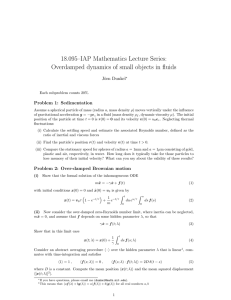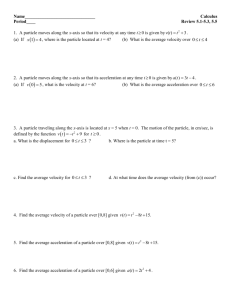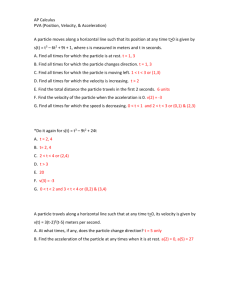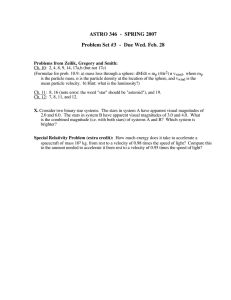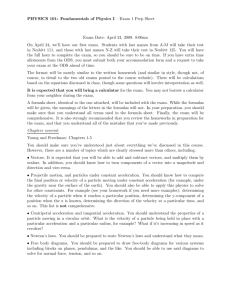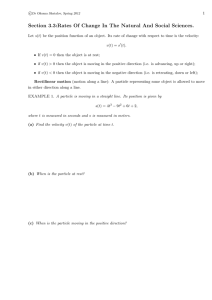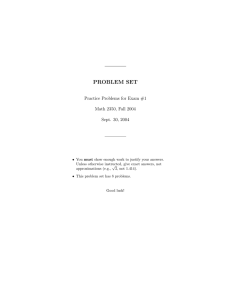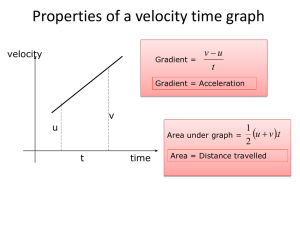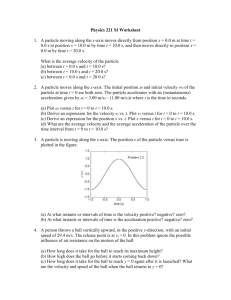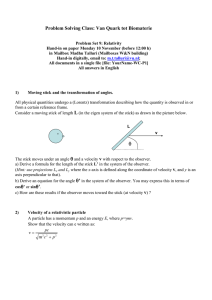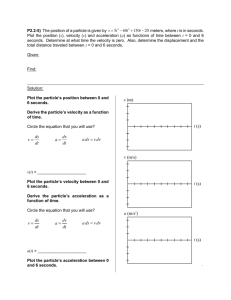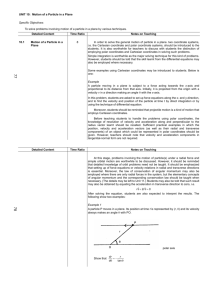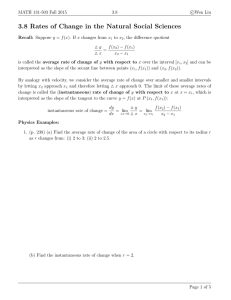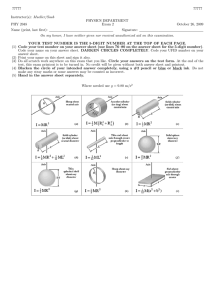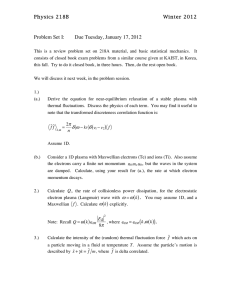P2.1-2 Worksheet - Conceptual Dynamics
advertisement
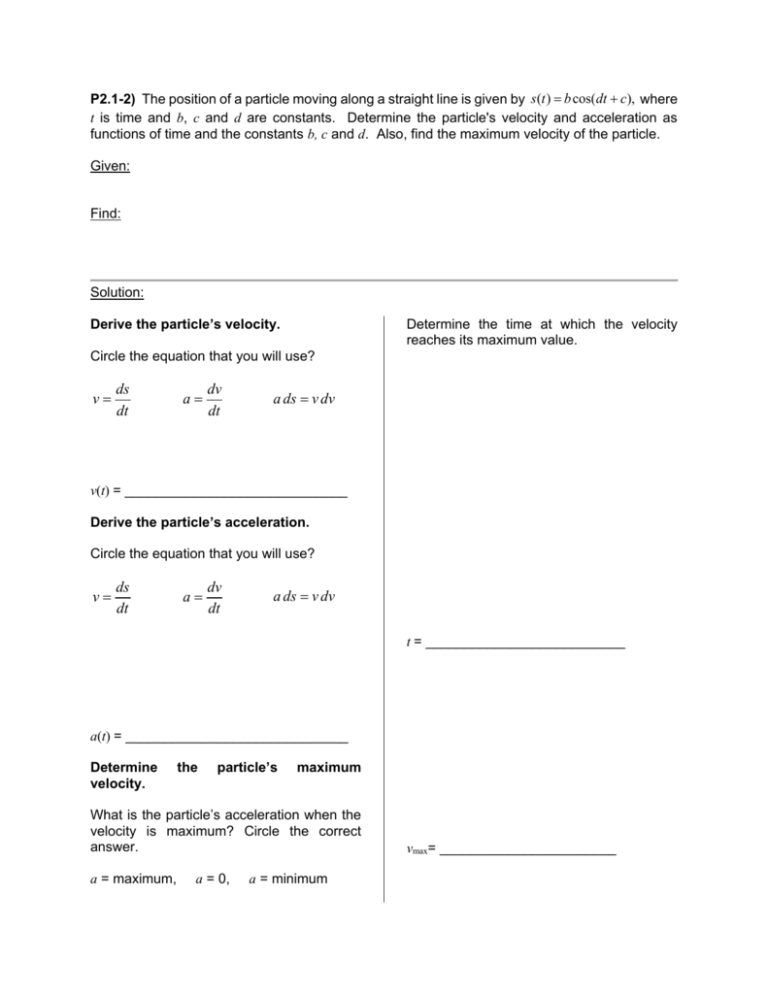
P2.1-2) The position of a particle moving along a straight line is given by s (t ) b cos(dt c), where t is time and b, c and d are constants. Determine the particle's velocity and acceleration as functions of time and the constants b, c and d. Also, find the maximum velocity of the particle. Given: Find: Solution: Derive the particle’s velocity. Determine the time at which the velocity reaches its maximum value. Circle the equation that you will use? v ds dt a dv dt a ds v dv v(t) = _____________________________ Derive the particle’s acceleration. Circle the equation that you will use? v ds dt a dv dt a ds v dv t = __________________________ a(t) = _____________________________ Determine velocity. the particle’s maximum What is the particle’s acceleration when the velocity is maximum? Circle the correct answer. a = maximum, a = 0, a = minimum vmax= _______________________




